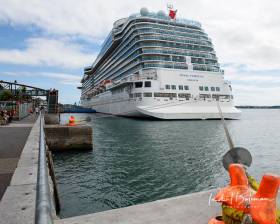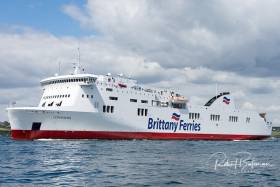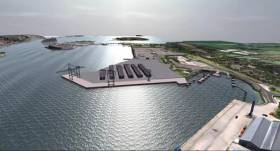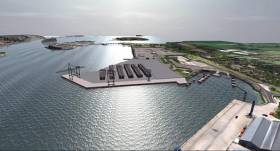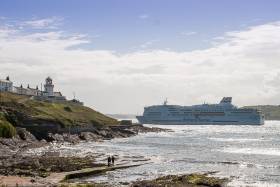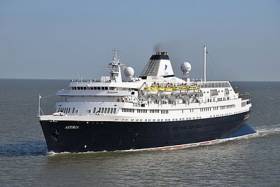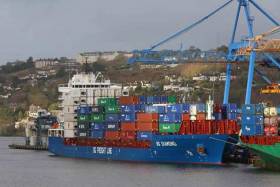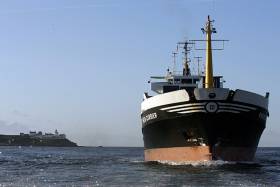Displaying items by tag: port of Cork
Cruise Passengers Boost Cork’s Economy by €12 Million as 2018 Cruise Season Draws to a Close
With one more cruise ship left to visit in December, the Port of Cork’s 2018 cruise season is drawing to a close. A total of 92 cruise ships will have visited in 2018, the most significant cruise season ever for the Port of Cork; and with over 157,000 passengers and 69,000 crews stepping ashore this summer, the local economy gained over €12 Million.
The increased cruise calls to Cork are indicative of the wider global cruise business which has seen huge growth. In 2018 it is estimated that 27.2 million people will have taken a cruise on over 450 cruise ships worldwide.
With the global cruise ship order book for new build contracts reaching 113 ships between now and 2027, Cork cruise business is set to grow further in the coming years and the Port of Cork is eager to attract these new ships.
Mr Brendan Keating, Port of Cork Chief Executive said: ‘Even though our cruise business has grown 30% in the last year, the biggest beneficiary is the region with up to €12 million injected into the local economy over the summer cruise season. This is a significant boost which we are delighted to facilitate. In 2019 we anticipate over 100 cruise calls to Cork and realistically this is how we expect the cruise business pace to continue.’
In October, the Port of Cork visited all the major cruise lines calling to Cork and feedback from the companies was very positive in terms of their passenger experiences when visiting Cork. Currently all cruise operations are handled in Cobh, Ireland’s only dedicated cruise berth, however, with the continued growth in calls, the Port of Cork is now keen to explore the option of a second cruise berth in Cobh.
In that regard, the Port of Cork last week launched their ‘Expressions of Interest’ to the market inviting submissions from potentially interested parties to develop and/or operate a new cruise berth at Lynch’s Quay Cobh.
Mr Conor Mowlds, Port of Cork Chief Commercial Officer said: ‘By launching the Expressions of Interest we will see if there is an appetite in the market to develop a new cruise berth in Cobh. From the Port’s perspective, we know this business is growing and we want to have every possible option ready to capitalise on this business.’
Port of Cork & Bantry Bay Port Company Achieve a Combined Turnover of €31.5m in 2017
The Port of Cork Company and Bantry Bay Port Company today announced their combined turnover for 2017, showing a positive increase compared to 2016. Consolidated Turnover for the year 2017 amounted to €31.5 million (incl. €0.54 million Bantry Turnover) up from €29.6 million (incl. €0.21 million Bantry Turnover) in 2016.
Consolidated Profit on ordinary activities before taxation amounted to €5.9 million compared to €4.1 million in 2016, an increase of €1.8 million due to improved trading activity and an improved return in Bantry. Profit after tax amounted to €5 million in 2017 (2016: €3.3 million).
In 2017, Port of Cork and Bantry trade traffic totalled 10.3 million tonnes compared to 9.5 million tonnes in 2016 which represents an increase of 814,000 tonnes or 8.6%. Total Oil throughput in 2017 through Bantry Bay and Whitegate oil Refinery amounted to 6.4 million tonnes up from 5.7 million tonnes in 2016, an increase of 11.4%. Total Container Traffic was 217,763 TEU, an increase of 4% on 2016 TEU’s.
Commenting on the 2017 annual results, Port of Cork Chairman John Mullins said: ‘our annual results for 2017 are very positive and the increase in total traffic is a reflection of these figures. I am also pleased to say that in 2017 the Port of Cork Company approved a dividend payment to the Exchequer of €693,065, an increase of 3% on 2016. We are committed to supporting the shareholder and will continue to pay a yearly dividend while also pursuing our capital strategic development plan.’
In 2017 both ports achieved a number of significant company successes, most notably the Port of Cork who received full planning permission for the altered first phase of the Ringaskiddy Port Development project.
Chief Executive Brendan Keating said: ‘Overall we are very encouraged by the increase in turnover compared with 2016. In 2017 the port agreed a funding structure for the Ringaskiddy Port Redevelopment with the EIB, AIB and ISIF (the Ireland Strategic Investment Fund). This €80 million port redevelopment will deliver more efficient container handling facilities thus securing ‘Cork Container Terminal’ as an international gateway for trade well into the future.’
 Tivoli Docks are moving to Ringaskiddy as part of Port of Cork plans Photo: Bob Bateman
Tivoli Docks are moving to Ringaskiddy as part of Port of Cork plans Photo: Bob Bateman
He continued: ‘This redevelopment will replace the existing container terminal at Tivoli and the transfer of Port related activities from the city and Tivoli will create a real opportunity for Cork Dockland sites to be redeveloped in the near future.’
 The Cruise Liner Royal Princess berthed at Cobh in Cork Harbour last Sunday Photo: Bob Bateman
The Cruise Liner Royal Princess berthed at Cobh in Cork Harbour last Sunday Photo: Bob Bateman
The cruise business has gone from strength to strength with 68 cruise liners calling to Cork and seven calling to Bantry in 2017. These cruise calls brought over 142,000 passengers and crew to the region, providing a substantial contribution to the local economy. In 2018, 96 cruise liners will visit the Port of Cork, a 30% increase on 2017 calls.
Another notable achievement in 2017 was the progress made on the establishment of a new ROPax service to Northern Spain and France culminating in the announcement by Brittany Ferries of a new twice weekly service to Santander, Spain and year round service to Roscoff, France. This new service, the first direct service from Ireland to Spain, will offer the option for freight carriers and passengers to bypass the UK and French land-bridge to Spain as Brexit uncertainty continues.
In Bantry, Phase 1 of the Bantry Inner Harbour Development costing in the region of €9million was completed and the official opening ceremony of the Bantry Marina development took place in August 2017.
Tender Sums Mistake Halts Cork’s Port Move Plans
#PortOfCork - The Port of Cork’s relocation to Ringaskiddy could be delayed by a ‘mistake’ in a tender for the civil engineering part of the the €82 million project, as the Irish Independent reports.
BAM Civil Ltd says it made a “significant mistake” in its sums for the €46.4 million tender that is short some €12 million for overheads.
Commercial Court proceedings are now ongoing, with the Port of Cork Company seeking that work commence as per the terms of the contract, as well as the provision of tax-clearance certificates and evidence of insurance among other orders. The Irish Independent has more on the story HERE.
The container terminal development at Ringaskiddy — relocated to Cork Harbour from the city centre at Tivoli docks — was launched yesterday as reported on Afloat.ie.
The Port of Cork marked a major milestone for the company today with the launch of the new Cork Container Terminal development in Ringaskiddy, as Afloat.ie first reported in 2015.
The Cork Container Terminal will initially offer a 360 metre quay with 13 metre depth alongside and will enable larger ships to berth in Ringaskiddy. The development also includes the construction of a 13.5 hectare terminal and associated buildings as well as two ship to shore gantry cranes and container handling equipment.
 A ship berthed upriver at the Port of Cork at Custom House Quay Photo: Bob Bateman
A ship berthed upriver at the Port of Cork at Custom House Quay Photo: Bob Bateman
The requirement for the development of new container handling facilities at Ringaskiddy was identified in the Port of Cork’s Strategic Development plan in 2010. It will accommodate current and future container shipping which can be serviced by modern and efficient cargo handling equipment with innovative terminal operating and vehicle booking systems. The Port of Cork anticipates that Cork Container Terminal will become operational by 2020.
Chairman of the Port of Cork, Mr John Mullins said: “The Port of Cork’s redevelopment at Ringaskiddy is a key growth enabler for both Cork city and region as well as the national economy and will enable the Port to deliver more efficient container handling facilities, replacing the existing container terminal at Tivoli, and securing the Cork Container Terminal as an international gateway for trade well into the future.
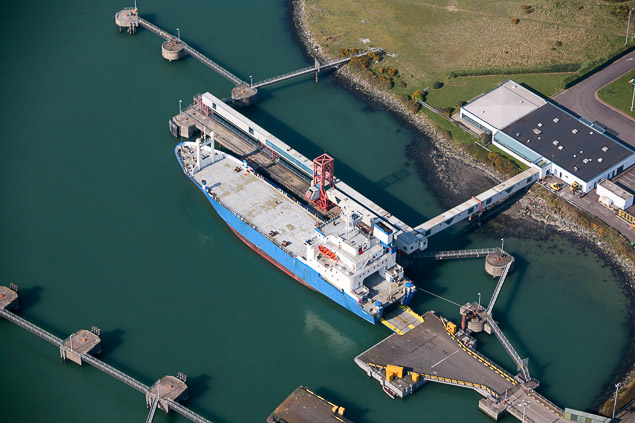 The existing deepwater berth at Ringaskiddy is being developed Photo: Bob Bateman
The existing deepwater berth at Ringaskiddy is being developed Photo: Bob Bateman
He continued: “The transfer of Port-related activities from the city and Tivoli will create a real opportunity for Cork Dockland sites to be redeveloped in the near future.”
This state of the art facility is the most significant single investment in marine infrastructure and superstructure in the history of the Port of Cork Company. Representing an investment of €80 million, the development is being funded by the Port through an innovative and award-winning financing structure comprising Allied Irish Banks, p.l.c, the European Investment Bank, and the Ireland Strategic Investment Fund (ISIF), and also by including European Union Connecting Europe Facility funds and self-finance.
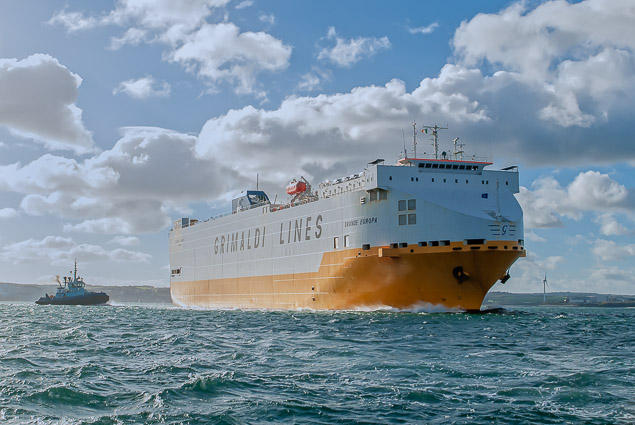 A massive Car Carrier arrives into Cork Harbour Photo: Bob Bateman
A massive Car Carrier arrives into Cork Harbour Photo: Bob Bateman
The Port of Cork awarded the development’s civil engineering contract to BAM Civil Ltd., part of the multi-national construction group, Royal BAM Group of the Netherlands.
Port of Cork Chief Executive, Brendan Keating said: “This development will secure the future for the Port of Cork, and ensure the trade gains are translated into significant economic benefits for the people of Cork and the Munster region, as well as the national economy. As part of this redevelopment the Port of Cork will deliver a public marine leisure amenity at Paddy’s Point and has also committed a €1 million community gain fund for the Ringaskiddy area for the development of an enhanced public realm scheme. We look forward to supporting the community and Cork County Council as they prepare and implement the scheme.”
Donal Murphy, Head of Infrastructure and Credit Investments at ISIF said: “This is an important investment for ISIF that demonstrates our commitment to investing in key infrastructure throughout Ireland on a commercial basis. It is the latest investment from our Connectivity Fund, which was established with proceeds from the sale of the State’s shareholding in Aer Lingus.
ISIF is using its ability to act as a long-term provider of capital to back the Port of Cork with flexible funding that is tailored to its specific needs. We expect this investment will underpin significant economic activity in the southern region. It will also enhance Ireland’s transport and supply chain links with major EU markets and help Irish exporters to access these markets post-Brexit.”
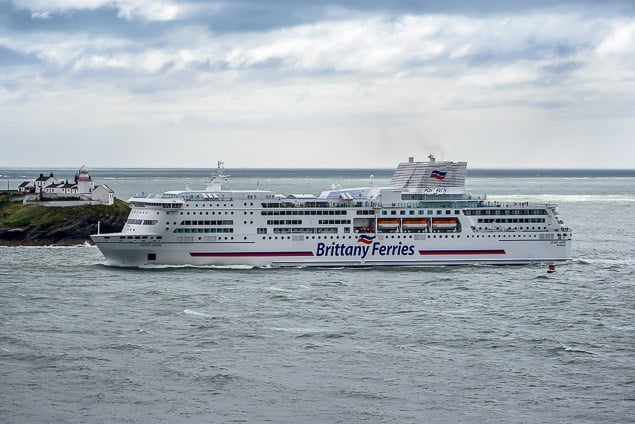 The Brittany Ferries flagship Pont Aven is a weekly runner into Ringaskiddy Photo: Bob Bateman
The Brittany Ferries flagship Pont Aven is a weekly runner into Ringaskiddy Photo: Bob Bateman
Conor Morgan, AIB Corporate Banking said “As the Port of Cork’s long-term relationship bank, AIB Corporate Banking is delighted to provide this financing for the Port of Cork to back their strategic development at Ringaskiddy Port. Following a funding process of over two years, an innovative transaction structure was put in place involving senior debt from AIB and EIB and junior debt from ISIF. As a key infrastructure deal supporting the growth of the Irish economy, the project increases future capacity at the port and brings major strategic value to the city of Cork and the Munster region.”
Andrew McDowell, European Investment Bank Vice President said “The redevelopment of Ringaskiddy will transform links between Ireland, Europe and the world, support exports by Irish business and create a world-class maritime logistics hub. The European Investment Bank is pleased to provide a EUR 30 million 18 year long-term loan alongside financing from leading Irish institutions for this crucial investment for Cork and Ireland. EIB support reflects the economic benefits and urban redevelopment to be unlocked in the coming years and the importance of ensuring alternative transport routes given export growth and ongoing uncertainties related to Brexit.”
In May 1978 Brittany Ferries launched their Cork-Roscoff ferry route from Cork City Quays with their flagship MV ‘Armorique’. At the time, all ferries departing Cork used the passenger terminal at Tivoli, before being transferred downriver to the dedicated Ringaskiddy Ferry Terminal which opened in 1982. Since then the passenger and freight route linking Ireland and France has gone from strength to strength and today the Port of Cork acknowledged this service by wishing Brittany Ferries a Happy 40th Anniversary linking the two countries.
Port of Cork Chairman, John Mullins said: ‘It is with great pleasure that today we wish our long-term customer, Brittany Ferries, a very happy 40th anniversary linking Ireland and France. This company has shown true dedication in providing a reliable and attractive ferry service for both passengers and freight. On behalf of the Port of Cork I would like to congratulate Brittany Ferries on the last the 40 years’ service and wish them every success for the next 40 years.’
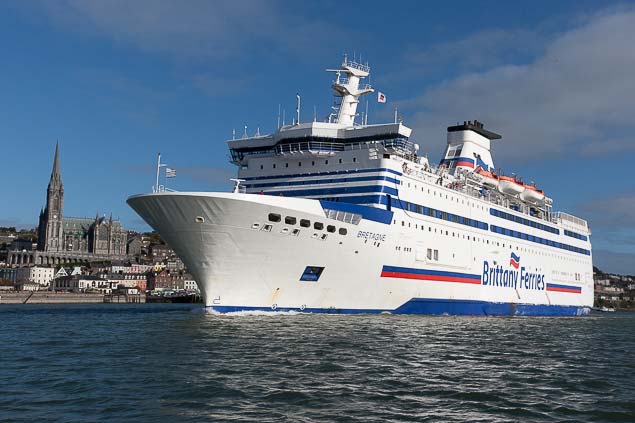 Britanny Ferries Bretagne off Cobh in Cork Harbour Photo: Bob Bateman
Britanny Ferries Bretagne off Cobh in Cork Harbour Photo: Bob Bateman
Over the last 40 years Brittany Ferries have become the market leader on the Western Channel for passengers and freight and in 2018 this commitment was further endorsed when Brittany Ferries announced the first ever ferry service linking Ireland and Spain, with the new Ro-Pax twice-weekly service from Cork to Santander. As well as serving Cork to Santander, this route also delivers an additional weekly return-sailing from Cork to Roscoff.
The new Ro-Pax ferry service was welcomed by the Port of Cork which has brought an increase in Spanish tourism to Cork and provides a very useful connection for exporting freight from Ireland to mainland Europe. This new service, the first direct service from Ireland to Spain, will offer the option for freight carriers and passengers to bypass the UK and French land-bridge to Spain as Brexit uncertainty continues. The Port of Cork hinterland is the key primary pharma, agriculture and food & drink output region in the country. This more efficient supply chain will offer freight customers a direct route to market enabling them to get their produce to market quicker than if they travel through traditional ports.
In 2017, Brittany Ferries carried more than 87,000 passengers, which was an increase of 4% on the previous season and contributing to the national economy. While France continues to be a popular travel destination for Irish travellers, the number of French people visiting Ireland showed no signs of waning as nearly 45,000 availed of the route, representing 52% of all passengers carried.
30% Increase in Port of Cork Cruise Business in 2018
MV Astoria arrived into Cobh today, the first of 94 cruise liners to visit the Port of Cork in 2018, a 30% increase on 2017 calls. The Port of Cork anticipates with 94 cruise calls the total passenger numbers to be 188,844 and 80,000 crew.
Up to eight cruise liners will make their maiden calls to Cork, including Disney Cruise Lines ‘MV Disney Magic’ in September and the largest of the MSC Cruise Lines fleet, MSC Meraviglia carrying a maximum of 4,500 passengers. Royal Caribbean’s MV Royal Princess will call ten times in 2018.
In 2017 the Port of Cork carried out cruise research on both passengers and crew arriving into Cobh and Ringaskiddy. The aim of the research was to get a sense of passengers shore excursions experiences and to determine any areas are in need of improvement. According to the research results many passengers who take the pre-booked shore excursions reported high experiences, while the ‘independent’ passengers seem to be looking for alternative more active experiences in both the City and the County.
The results of the cruise research also highlighted an increase in passenger and crew spend. On average, cruise ship passengers spend €81 during their time in Cork; with 42% of this money being spent on shopping, 32% on excursion travel and 17% on food and drink. Typically crew spend approximately €29, with most of the money being spent on food and drink and/or shopping.
Commercial Manager Captain Michael McCarthy said: ‘We have seen a massive surge in cruise calls for 2018 with a 30% increase in calls. These calls will bring outstanding economic growth to Cork City and County between March and September, with over 180,000 passengers stepping ashore and 80,000 crew.’
He continued: ‘We are absolutely delighted with the growth in the cruise sector and so far we are seeing a high volume of calls for 2019 also. It’s very encouraging to see cruise lines bringing their newest vessels to Cork on maiden calls and choosing Cobh as part of their cruising route.’
As well as Cork the Port of Cork also operates Bantry Bay Port Company which will see ten cruise liners calling to the West Cork area this summer. Bantry Harbour and Glengarriff can accommodate the smaller boutique cruise liners whose passengers tend to look for active expedition cruises. In 2017 just five liners called West Cork, showing a 50% increase in 2018 calls.
Mullins Reappointed as Chairman of the Port of Cork
The Minister for Transport, Tourism and Sport, Mr. Shane Ross TD on the re-appointment of Mr. John Mullins as Chairman of the Port of Cork.
Mr. John Mullins said: ‘I am grateful of the trust placed in me by Minister Shane Ross on my reappointment as Chairman of the Port of Cork. The next there years promise to be the most transformational period for the Port of Cork in its history. The transition from a River Port to a Sea Port will be substantially completed over this period. Land made available by this transition will provide Cork City with the ability to address an exciting commercial and municipal future by enabling the development of the Docklands and Tivoli.’
Welcoming the re-appointment, Mr Brendan Keating, Port of Cork Chief Executive said: ‘On behalf of the Port Management and Board of Directors, I would like to congratulate Mr. Mullins on his re-appointment as Chairman. Having this continuity on the board is vital as the Port of Cork enters a critical stage of the Ringaskiddy Port Redevelopment.’
Mr. Mullins will continue as Chairman of the Port of Cork for a further three years.
More Heavy Lift Operations At Cork Dockyard as 'HHL LAGOS' Arrives at Port of Cork
Since Friday (2nd February 2018) planned heavy lift operations at Cork Dockyard involve the loading of cargo onto the vessel ‘HHL Lagos’.
Last February, as Afloat.ie reported at the time here, the same Cork Harbour dockyard was the site selected for loading massive Liebherr cranes onto an equally massive ship bound for Puerto Rico.
Current operations with HHL Lagos will occur at multiple times, for periods of up to five hours, according to the Harbourmaster. These operations are planned to be completed within 1 (one) week.
During the lifting operations, commercial vessel traffic may be restricted from navigating in the vicinity of Cork Dockyard to facilitate safe operations. Vessels navigating in the area must contact Port of Cork Operations on VHF Channel 12 for details of any lifting operations, and associated navigation restrictions.
Once the cargo has been loaded onto the HHL Lago, this cargo shall overhang into the navigation channel.
Vessel Masters & operators are requested to pass HHL Lagos at a minimum safe speed and producing no visible wash for the duration of the HHL Lagos’s stay at Cork Dockyard.
Furthermore, vessels are requested to keep a sharp lookout for any potential overhangs and obstructions from the HHL Lagos, and to closely monitor VHF Channel 12 at all times for information updates.
MV 'BG Diamond’ Makes Her Maiden Call To Port Of Cork
BG Freight Line’s latest new build MV ‘BG Diamond’ arrived in the Port of Cork today on her maiden call to Tivoli Container Terminal from Rotterdam. The brand new containership developed by BG Freight Line, in conjunction with designers CIMC ORIC and Arkon Shipping and is one of four brand new ships developed by BG Freight Line capable of loading 45ft short-sea containers. The new BG Freight vessel is the max size vessel for Tivoli Container Terminal.
Brendan Keating CEO Port of Cork said: ‘BG Freight Line is a longstanding customer to the Port of Cork and this new build vessel shows a further commitment for our future relationship. Port of Cork is committed to providing modern infrastructure which will remove the current limitations at up-river berths. The new facilities planned for Ringaskiddy Port Redevelopment, Cork Container Terminal (CCT) will further improve the Ports capability to handle the growing Lo-Lo sector. CCT when completed will be the most modern terminal in Ireland and will serve the regions shipping needs for many years to come.’
MV ‘BG Diamond’ is fitted with state-of-the-art features such as a modern wet scrubber system for exhaust cleaning which complies with Emission Control Area (ECA) requirements.
Koert Luitwieler CEO BG Freight Line said: ‘We are extremely proud that our first newbuilding, the mv ‘BG Diamond’ is now deployed on our dedicated route between Rotterdam and Cork. This is an important mark in the long history of BG Freight Line and will enable us to trade with highly fuel efficient and environmental friendly tonnage for the next decades.’
Port Of Cork Company & Bantry Bay Port Trade Traffic Up 8.6% In 2017
Combined total traffic through the Port of Cork and Bantry Bay Port Company reached 10.3 million tonnes in 2017, a very good increase of 8.6% compared to 2016. Total imports increased by 6.4% while exports increased by 12.3%. The Port of Cork total container volumes through both Tivoli and Ringaskiddy Container Terminals grew by 3.7% compared to 2016 figures, with a total of 217,763 TEU’s handled in 2017.
Oil traffic, predominantly handled through Whitegate Oil Refinery now owned by Canadian company Irving Oil, saw an increase of 2%. Trade in dry bulk cargos such as animal feed, fertilisers and cereals saw increases throughout the year.
In 2017 the Port of Cork handled 68 cruise liners bringing over 140,000 passengers and crew to the region, while in Bantry Bay five cruise liners visited the harbour, with MV Prinsendam making her maiden call to Bantry, the first liner to do so in 30 years.
Brendan Keating, Chief Executive said: ‘We are encouraged by the increase in trade traffic through the Port of Cork and Bantry Bay Port in 2017. An 8.6% increase in total trade traffic shows the positivity in the markets which were showing a marginal decrease in 2016. We are particularly encouraged by the growth in container traffic through both Tivoli and Ringaskiddy which increased by 3.7%. This increase is a clear indication that consumer markets are beginning to open up with both imports and exports on the rise through Cork.’
He continued: ‘In 2017 the Port of Cork saw over 34,000 trade vehicles imported through Cork. The trade car market is very important for Cork, however unfortunately we saw some decreases in the volume of cars imported. With regards to tourism, the Port of Cork had a very positive year with 68 cruise liners calling bringing over 142,000 passengers and crew to visit the Munster region. Furthermore, in 2017, for the second year running, Cobh was named the second Best Cruise Destination in the British Isles & Western Europe in the Cruise Critic Cruisers’ Choice Destination Awards, a further endorsement of our cruise business.’
Commenting on Bantry Bay Port Company, Brendan Keating said: ‘In August 2017, we successfully completed and opened Bantry Harbour Marina, part of the inner harbour development. This new sheltered harbour facility will be of great benefit to both commercial and leisure users bringing increased activity to Bantry Harbour and Town. The cruise business has doubled with ten cruise liners expected to call in 2018.’
Following the recent announcement by Brittany Ferries on their new twice weekly Ro-Pax route from Cork to Santander due to commence in April 2018, Mr. Keating said: ‘In 2018 Brittany Ferries celebrate 40 years operating in Ireland and we are very pleased with the announcement of this new route both in terms of tourism and trade. The current weekly route from Cork to Roscoff continues to strengthening with Brittany Ferries carrying over 80,000 passengers in 2017 and we look forward with great optimism to additional passengers availing of Brittany Ferries new service and the second call to Roscoff per week.’
In 2017 the Port of Cork Company signed a Memorandum of Understanding (MOU) with NextDecade Corporation (NASDAQ: NEXT), a U.S.-based Liquefied Natural Gas (LNG) to explore a joint development opportunity for a new Floating Storage Regasification Unit (FSRU) and associated LNG import terminal infrastructure in Cork Harbour
Mr. Keating said: ‘As an entry point into the Irish energy market, the Port of Cork is an attractive location for an FSRU-based LNG import terminal. Surrounded by existing marine infrastructure and industrial facilities, the proposed site is less than 2 km from Gas Networks Ireland Grid and would benefit from relatively benign and attractive conditions.’
He continued: ‘Discussions are ongoing with the Port of Cork and NEXTDecade, as well as other key industry players, who are supportive of this project and we are excited by the opportunities that this project could present.’
In 2015 An Bord Pleanala granted a 10-year planning permission to Port of Cork for the redevelopment of the existing port facilities at Ringaskiddy and in 2017 An Bord Pleanala granted permission for alterations to the terms of the Ringaskiddy Port Development. The permission will enable the Port to deliver more efficient container handling facilities, replacing the existing container terminal at Tivoli, and securing Cork Container Terminal as an international gateway for trade well into the future.
Ringaskiddy Port Redevelopment will future proof Cork trade and Port of Cork look forward to the project progressing in 2018.


























